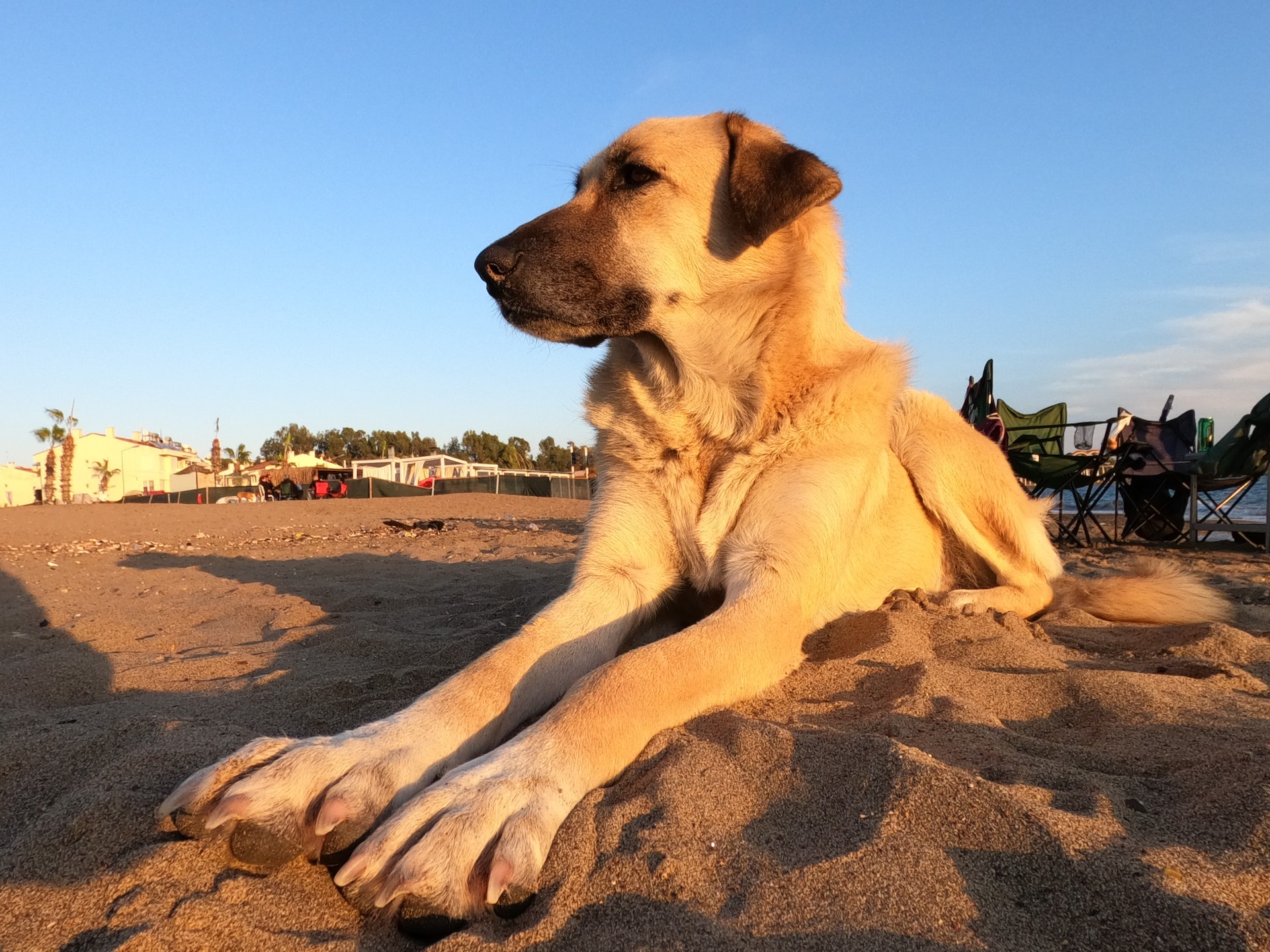Turkish shepherd dogs of the Kangal breed date back to the early 12th century, when they first appeared on the East Anatolian Plateau.
Due to their alleged ancestry with early mastiffs, they are grouped with the large dog breed known as the molosser family.
Additionally known as Turkey’s national dog, it is acknowledged as an official breed by the United Kennel Club and the Cynology Federation of Turkey.
Its guardianship work on massive farms has also become more well-known in other nations.
They are very independent, strong-willed dogs with a high level of intelligence which make decisions without the need for human direction.
They are very autonomous, strong-willed canines with a high level of intelligence which make judgments without the need for human direction.
Even though they get along well with kids and are the perfect type for new dog owners, this breed has a little aloof disposition. We have covered all the significant factors that will enable you to make an informed decision if you’re considering adopting or purchasing one.
Table of Contents
What is the price range for Kangal dogs in India?
The region where a Kangal dog is purchased and raised will determine its price. Depending on the breeder, pet shop, and area, you would generally have to spend anywhere between Rs. 20,000 and Rs. 70,000, with the average being about Rs. 40,000 for the Kangal itself.
What elements affect the price of Kangal in India?
The price of a Kangal puppy will vary depending on where the dog market is located and will be greater if it needs to be brought into India.
The price can be influenced by the dog’s pedigree or quality, the buying environment (such as puppy mills and licensed breeders), and the dog’s individuality (such as a coat mark or eye colour).
Feeding premium dog food, raw meat, bread, yoghurt, and goat’s milk might cost anywhere between Rs. 3000 and Rs. 5000 per month.
Despite being a healthy breed, Kangal dogs need attention and care throughout their first year, and their immunizations can cost between Rs. 5000 and Rs. 7000. A list of necessary immunizations is available from the veterinarian.
Vet visits- It is advised to have regular checkups with the vet for ear cleaning, and neutering or spaying your pet may cost between Rs. 7000 and Rs. 14000, plus any necessary medications run you approximately Rs. 1600.
Grooming – To avoid infections, it is a good idea to go to a professional salon before and after the Kangal dog’s two shedding periods.
If done at home, the cost of grooming a Kangal dog can range from Rs. 300 to Rs. 500 each month, depending on the quality and quantity of the grooming supplies used, such as shampoo, brushes, conditioner, and other items. It might cost anything from Rs. 1500 to Rs. 2000 to visit a professional groomer.
Some essential accessories include leash, collar, food and water bowls, and toys for the dog’s amusement. Giving your Kangal dog a treat for accomplishments and good behaviour can inspire more of them.
It’s crucial to teach your Kangal dog obedience and responsibility as a protector. The price of treats varies depending on the manufacturer of commercial dog treats or the kind of homemade treat sold.
Pitbull vs Kangal
The American Pitbull Terrier dog breed is renowned for its intimidating bite and powerful muscles. Although this breed has a fearsome reputation because of its enormous jaws and volatile temperament, its biting force is just 235 PSI. Pit bulls may be easily defeated by Kangal dogs, which have a greater cutting power of 743 PSI.
In the past, Pit bulls were frequently used in the US for dogfighting, whereas Kangals were more commonly used in Turkey.
Kangal is a naturally protective dog crossed with other breeds to alter temperament and enhance aggressiveness.
Unfortunately, the maintenance of pure bloodline has been destroyed by using steroids and medicines to inflame behaviour.
Lion vs Kangal
According to legend, the original Kangal was descended from a lion, which would explain why they resemble lions in size and bite today. In the past, this dog was also employed as a lion, wolf, and bear deterrent.
Additionally, kangals have defended humans from other wild cats, like cheetahs. Cheetahs only have a 475 PSI biting force, and Kangal dogs can readily subdue them.
500 Kangal dogs were sent to Namibian farmers in 1994 to guard livestock against cheetah attacks and prevent farmers from killing cheetahs.
Farm animal and cheetah killings were decreased thanks to Kangal dogs’ keen guarding skills.
Although the lion’s bite has a 650 PSI force, they are natural hunters and have a violent temper. The sole purpose of kangals is to guard flocks from wild animals.
However, the Kangal was the Anatolian Lion in the past.
History & About
This breed’s roots are in the Turkish village of Kangal in Central Anatolia. It is categorized as a molosser breed family, including the Boxer, Rottweiler, and English Mastiff.
In hilly terrain, grazing sheep flocks were frequently protected by kangas.
The Kangal dog had to defend the farmers’ flocks against several predators, such as wolves, bears, and others.
It lets out a distinctive howl to signal the sheep to congregate behind it when it spots a possible predator. Certain strains of the breed were intentionally developed to be resistant to wolves on their own.
It demonstrates bravery and fortitude and has built an impressive reputation throughout Africa. It was first brought to the United Kingdom in the 1960s and the United States in the 1980s, and it was most recently accepted for registration by the Kennel Club.
Appearance
There is a noticeable difference between Kangal’s male and female builds, a massive dog with big muscles and a well-proportioned appearance.
It features a wide, broad head with a modest dome at the front of the skull and a flat region between the ears. The broad, tapering snout takes up about two-thirds of the length of the crown.
Large teeth, a square-shaped jaw, and thick lips are its features. It has a black nose and a covering of facial hair that conceals its eyes and muzzle.
They have golden-brown fur, oval-shaped eyes, and high-set ears that are carried low to the cheekbones and only perk up in response to danger.
It has straight, well-boned lower limbs, a powerful neck with redundant skin, a well-muscled back, a low-curled tail, and these features.
Kangal dog breeds have a well-tucked midsection, a deep chest with good spring, and substantial lung capacity.
It possesses a thick, highly dense coat that is water-resistant, warm, and unable to be nibbled through by predators.
Trainability
When trained, kangals can be resistant. Thus a patient teacher is necessary. It responds nicely to daily repeats spread out over brief training sessions.
Socialization of Kangal puppies with other puppies, as well as human friends and family, is crucial from an early age.
When the puppy reaches maturity, the owner may experience hostile behaviour that mocks them.
For an adult dog of this size, it’s critical to be firm and reprimand the dog as soon as possible to prevent handling and control issues.
Kangal dogs demand broad space and are frequently employed by those who own big ranches and farms, therefore they might not be entirely suitable for apartments. They may, however, also reside in a reasonably sized home with a yard.
They need constant instruction and socialization to instil good behaviour and prevent aggressive outbursts.
Before purchasing this breed, one should consider the costs involved in rearing them.
FAQs
Kangal dogs are used to the heat. Thus they can live in India. All you have to do is regularly do good grooming on your Kangal Dog.
It is impossible to overcome a Kangal dog as a lion, yet it is possible since they are energetic and challenging to kill. However, a Kangal Dog is probably unable to compete with an adult lion.






